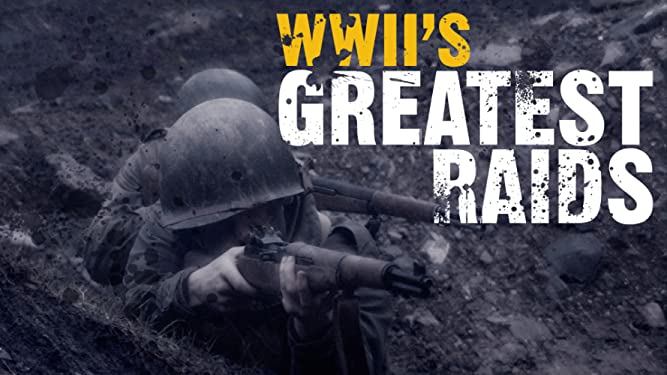Great Raids of World War II episode 3 – Radar Beam Raiders: As RAF Bomber Command began to strike back at Nazi Germany, it was soon suffering unsustainable losses from the Nazi air defence system. At its heart were as yet unidentified radar systems using wavelengths which urgently needed to be cracked. At last, in December 1941 a key German radar installation was located at Bruneval near the French North Sea coast, and a team of Britain’s new paratroops were sent in to seize it.
Operation Biting was a British military operation that took place during World War II. It was a daylight airborne raid on the German radar station at Bruneval, France, which was conducted on February 27, 1942. The operation was carried out by the British Army’s Parachute Regiment, with support from the Royal Air Force and the Royal Navy. The objective of the operation was to capture German radar equipment and personnel, in order to gain intelligence on the technology and understand how it worked. The raid was successful, and the radar equipment and personnel were brought back to Britain for analysis. The operation was considered a major intelligence coup for the Allies and had a significant impact on the course of the war.
World War II was the greatest military confrontation the world has ever known. On land and sea and in the air the scale of the conflict was unprecedented. But amid the great campaigns were many smaller-scale operations which were vital to Allied success – occasions when small numbers of men could have an effect out of all proportion to their numbers; occasions when the course of the war hinged on their courage and daring.
This series looks at six such raids. With the use of veterans’ accounts; carefully researched archive film; meticulous reconstructions and 3-D graphics the viewer is put right into the heart of the action – whether it was foiling Hitler’s attempts to acquire an atomic bomb, or discovering the secrets of the air defences of the Nazi Reich. The recreated raids include the British and Norwegian mission to smash Hitler’s nuclear programme; the canoe-borne commando assault on Bordeaux to disrupt supplies of raw materials essential for Hitler’s war machine; and the paratroop capture of a key German radar installation at Bruneval, which brought back information vital to enable Britain’s bombers to strike at the heart of Nazi Germany. All six episodes from the series are included on this set.
Great Raids of World War II episode 3 – Radar Beam Raiders
Operation Biting
Operation Biting, also known as the Bruneval Raid, was a British Combined Operations raid on a German coastal radar installation at Bruneval in northern France, during the Second World War, on the night of 27–28 February 1942.
Several of these installations were identified from Royal Air Force (RAF) aerial reconnaissance photographs during 1941, but the purpose and the nature of the equipment was not known. Some British scientists believed that these stations were connected with successful German attacks of RAF bombers conducting bombing raids against targets in Occupied Europe, resulting in severe losses of pilots and bombers. The scientists requested that one of these installations be raided and the technology it possessed be studied and, if possible, extracted and brought back to Britain for further examination.
Due to the extensive coastal defences erected by the Germans to protect the installation from a seaborne raid, the British believed that a commando raid from the sea would suffer heavy losses and give sufficient time for the enemy to destroy the installation. Officials decided that an airborne assault followed by seaborne evacuation would be the most practicable way to surprise the garrison of the installation, seize the technology intact, and minimise casualties to the raiding force.
On the night of 27 February, after a period of intense training and several delays due to poor weather, a company of airborne troops under the command of Major John Frost parachuted into France a few miles from the installation. The main force assaulted the villa in which the radar equipment was kept, killing several members of the German garrison and capturing the installation after a brief firefight.
An RAF technician with the force dismantled a Würzburg radar array and removed several key pieces, after which the force withdrew to the evacuation beach. The detachment assigned to clear the beach had initially failed to do so, but the German force guarding it was soon eliminated with the help of the main force. The raiding troops were picked up by landing craft, and transferred to several motor gunboats, which returned them to Britain.
The raid was entirely successful. The airborne troops suffered relatively few casualties, and the pieces of the radar they brought back, along with a captured German radar technician, allowed British scientists to understand enemy advances in radar and to create countermeasures to neutralise them




